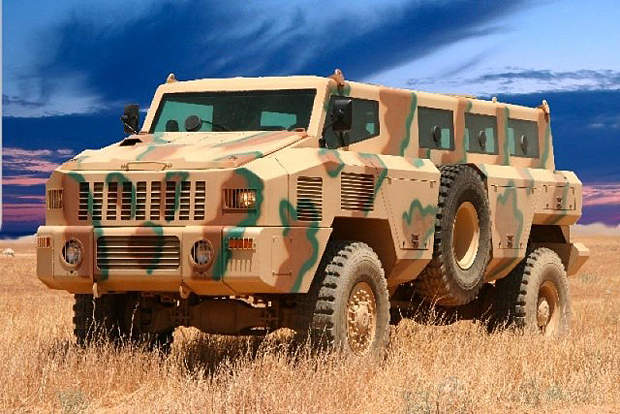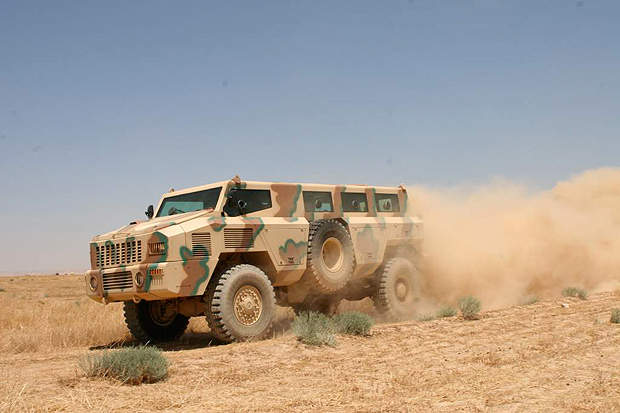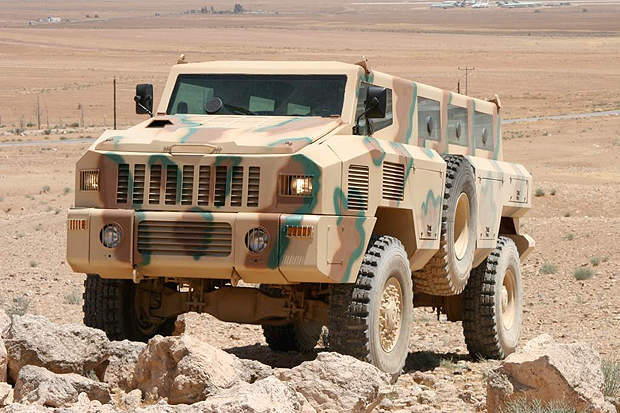The Matador is an armoured mine-protected vehicle manufactured by Paramount Group in South Africa. The vehicle was officially launched at the Africa Aerospace & Defence Exhibition.
The development of the Matador began in 2006 and first prototypes were completed in 2007. Trials were conducted at Paramount’s research and development base in South Africa, while mobility trials were conducted in United Arab Emirates.
Azerbaijan placed an order for 25 Matadors in 2009 – these vehicles are being produced in Azerbaijan under license from the Paramount Group. Knock-down kits and key subsystems are being supplied by Paramount. The first batch of production was completed in 2010 and final deliveries in 2011.
Matador MRAP vehicle design
The Matador mine-protected vehicle incorporates a double-skin monocoque hull. Troops can enter and exit the vehicle through a rear door or roof hatches, while built-in firing ports on the large armoured glass windows enable them to fire their individual weapons from inside the vehicle. The Matador provides seating for a crew of two in the front, and 12 in the rear.
The Matador can be modified to suit various missions and roles. External stowage bins allow the vehicle to carry on-board provisions and equipment for maximum self-sufficiency. The Commercial-Off-The-Shelf (COTS) automotive assemblies and components used in the vehicle will also reduce ownership and life-cycle costs. The vehicle can be repaired on field by replacing the axles and springs within an hour after a mine blast.
Matador has a length of 6.57m, width of 2.48m and height of 2.77m. It can carry a payload of 4,500kg, and has combat and kerb weights of 15,300kg and 10,800kg respectively.
Matador armoured vehicle variants
Matador is available in 4×4 and 6×6 vehicle configurations. Though the baseline variant of the vehicle is an armoured personnel carrier, it is also available as a utility mine-protected vehicle, armoured ambulance and command post mine-protected vehicle.
Armament
Matador can be armed with light and medium-calibre machine guns, cannon installations, mortar firing platforms and missile launchers. It can also be fitted with a combat turret.
Self-protection
The traditional V-shaped hull incorporates double-skin spaced armour design. The main hull structure consists of three self-jigging plates. The hull provides all-round protection and survivability against kinetic energy projectiles up to STANAG 4569 Level III for the crew compartment.
Trials in South Africa verified that the The Matador can survive a blast from a double anti-tank mine at any point under the hull, and a triple anti-tank mine under any wheel. The Matador is the only vehicle in its weight class to offer such high level of protection.
The Matador can withstand the explosion of 155mm HE round at a range of 60m. It also offers all-round protection against 7.62mm NATO armour-piercing rounds.
The protection level can be further increased by add-on armour kits. The vehicle can be optionally fitted with an NBC protection system.
Engine
The Cummins turbocharged diesel engine, coupled with ALLISON SP3000 six-speed automatic transmission, delivers a power output of 221kW. The engine is located at the front of the vehicle, leaving the remainder clear for the crew and passengers.
The Matador comes with full-time all-wheel drive, and can be optionally fitted with a MAN diesel engine coupled with 12-speed semi-automatic transmission.
Mobility
The Matador can be deployed in military and peacekeeping operations in urban areas, but is ideal for missions in less built-up areas due to its large turning circle.
It is fitted with a central tyre-pressure system that helps to manage tyre pressure while driving over different types of terrain. The air-operated disc brakes featuring anti-lock braking system provide control over the vehicle at various speeds.
The Matador has cruise speed of 100km/h and a maximum range of 700km.





